
Why Sri Lanka is the stranger you feel like you’ve known for years
There’s a certain perfume in the air of a place that tells you it’s special. A little smoky and a little salty, it’s a scent that carries on a warm breeze, making you feel nostalgic and filled with hopeful anticipation. Sri Lanka has this smell.
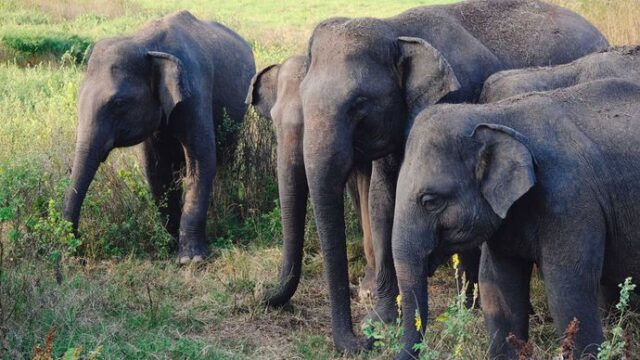
The ‘Pearl of the Indian Ocean’ reminds the well-travelled of other adventures while offering a distinctly unique experience. When spotting elephants on safari, you could be in Africa; winding your way through colourful markets is Indian deja vu; sipping coconuts on the beach by lush tropical palms speaks of lazy days in Bali.
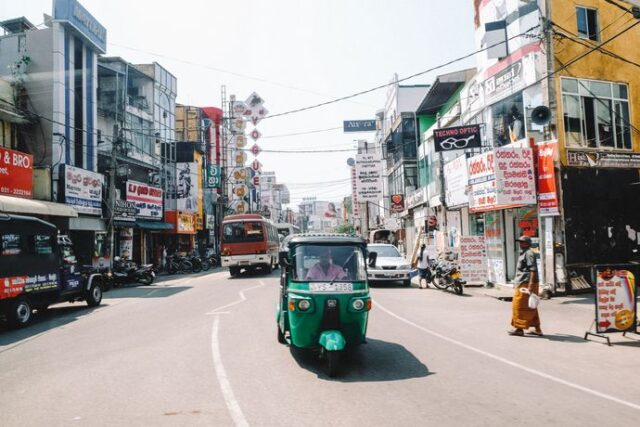
That’s precisely the beauty of Sri Lanka: it’s the stranger you feel like you’ve known for years.
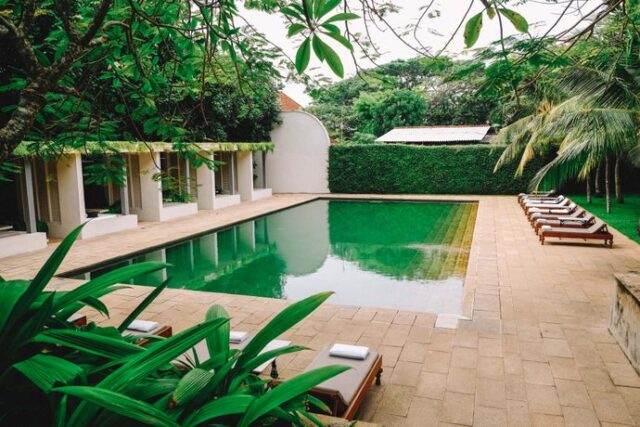
Cheaper than Africa, less chaotic than India, more rustic and unaffected by tourism than Bali and the same flight length as Hawaii, I’d like to introduce you to your new favourite island destination.
Let’s get to know Sri Lanka.
How to get there
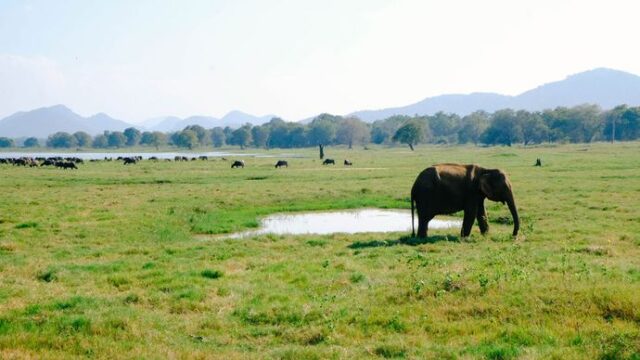
SriLankan Airlines launched a daily direct route between Melbourne and Colombo late last year, and with ample domestic connections you can time well, this 10-hour route offers a welcome change to a five-hour layover in either Singapore or Kuala Lumpur. The staff are experienced, friendly and attentive, but it’s the childcare service for parents that sets Sri Lankan Airlines apart.
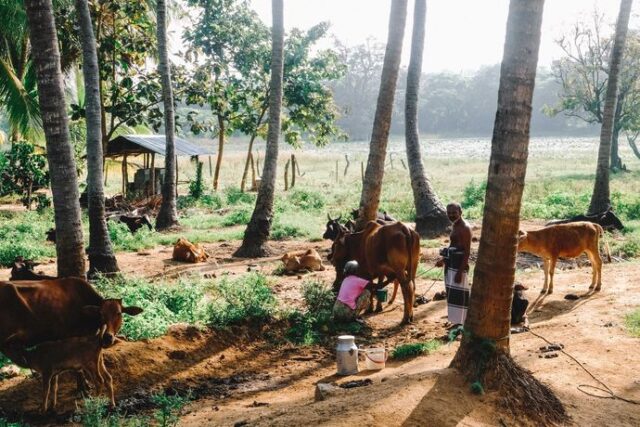
Important things to know
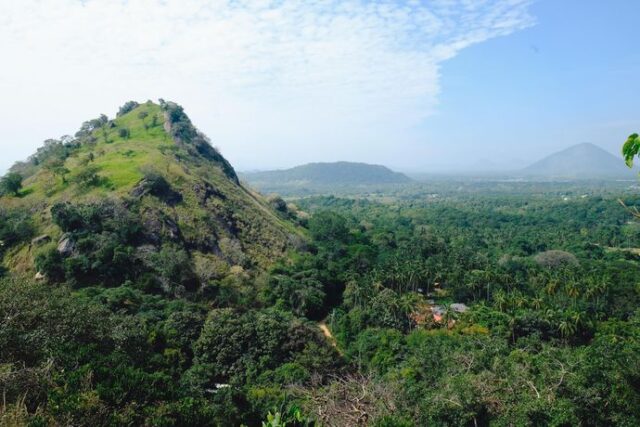
Sri Lanka looks like a tear drop or pearl towards the bottom right of India. It offers pristine beaches, lush tea estates and spice plantations, a staggering 350 waterfalls that cascade down rolling hillsides and mist-shrouded mountains, abundant wildlife and a culture that reaches back over 2,500 years.
Many have likened Sri Lanka’s rising popularity to its ‘India Lite’ offering: the diverse landscapes, cuisines, and spirituality of India, condensed into a much smaller territory. Oh, and almost everyone speaks English.
English is widely spoken due to the country’s colonial past and history of invasions. Sri Lankans also speak either Sinhalese or Tamil, and it’d do you well to learn a couple of phrases.
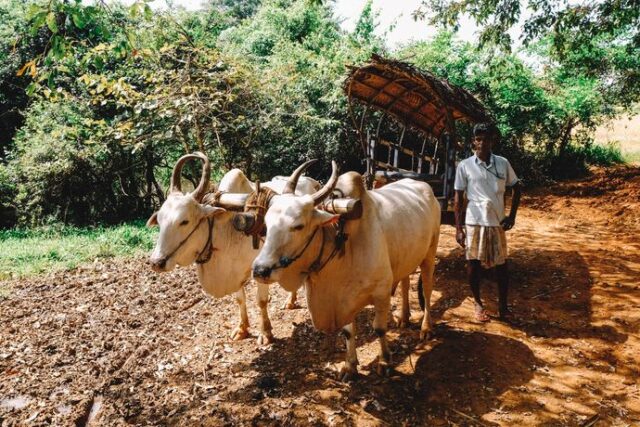
With the exception of the Hindu north, Sri Lanka is mainly Buddhist. There are countless temples and monuments dedicated to Siddartha throughout the country, and the people have a laid-back, reflective way of understanding the world. This endearing attitude, however, can be the very thing that pushes westerners’ buttons – mine included. Whether you like it or not, you’ll learn to be more patient and let things happen as they happen.
On that note, time is elastic here and Sri Lankan’s might promise you the world, but delivery is another matter. You just have to adjust to a new flow. Have a coconut, relax on the beach.

It’s a UNESCO world heritage hot spot
Sri Lanka has eight UNESCO world heritage sites, an impressive feat considering its size.
To see the cradle of an ancient empire, ride the train to Sri Lanka’s central plains and explore the sacred city of Anuradhapura; you’ll find crumbling dagobas and monasteries circling out from a 2000-year-old holy Bo tree.
The ancient city is an archaeological goldmine, and apparently boasts the most unearthed Buddha’s relics according to historical records. In a similar vein, a visit to Polonnaruwa will reveal Brahmanic monuments and 12th century relics.
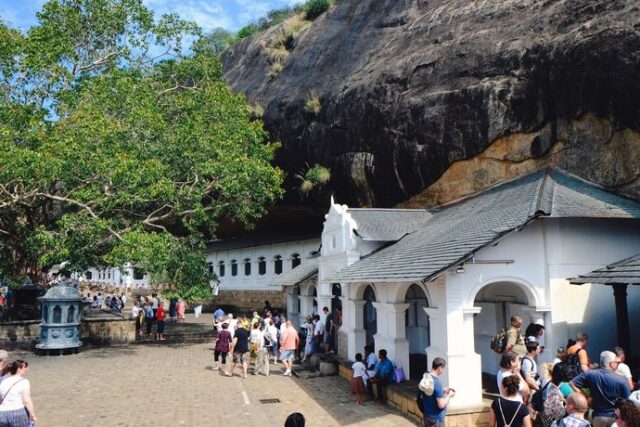
In Dambulla sits the Golden Temple, a well-preserved cave temple honouring Buddha.
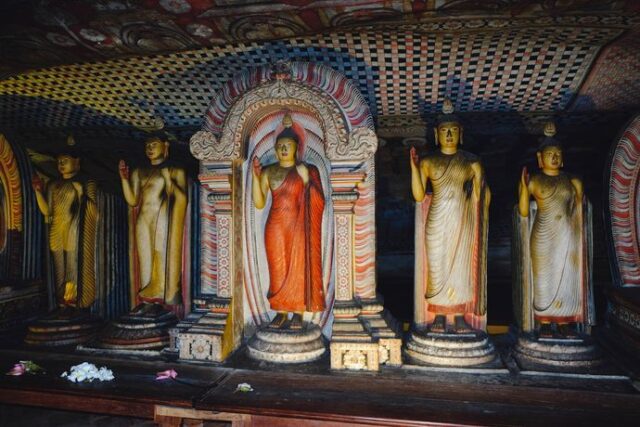
The caves, rock and temple date back to the 1st century BC, and inside there are intricate paintings covering the ceilings and walls.
Up in the verdant hills in tea country is Kandy. Considered Sri Lanka’s cultural capital, it’s where you’ll find the Temple of the Tooth, one of Sri Lanka’s holiest shrines.
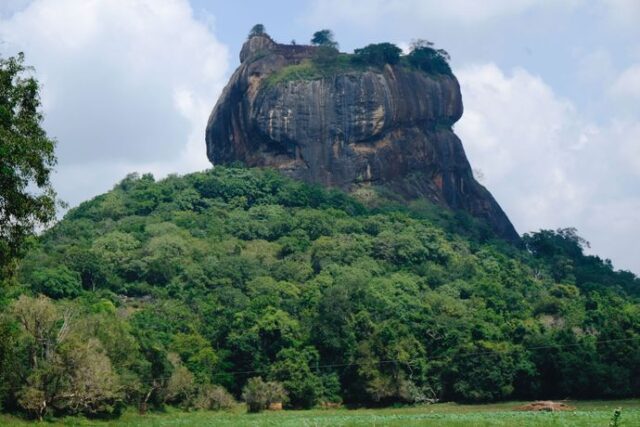
Nearby, Sigiryia – known as ‘The Lion Rock’ – is both a rock fortress and palace. Constructed in the 5th century, it has a gateway built in the form of an enormous lion.
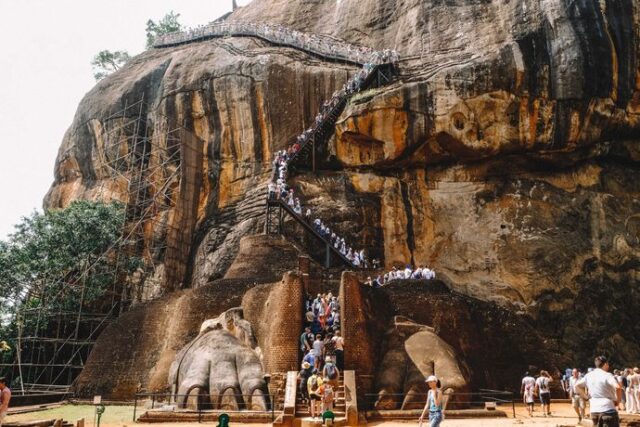
Climb the stairs at the lion’s paws to reach the palace on the flat top of this rock (plus sweeping views), decorated with colorful frescoes.
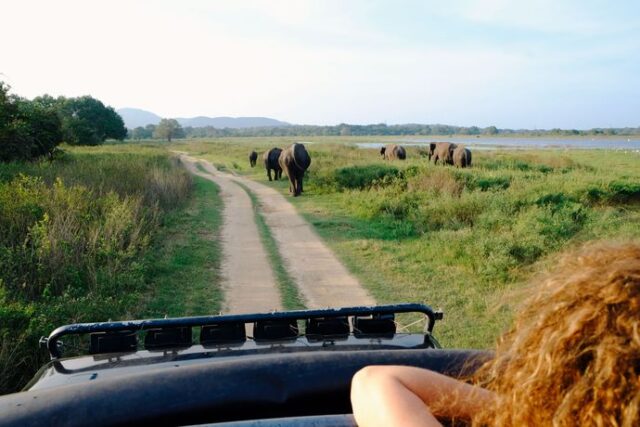
The central highlands make the UNESCO list due to their biodiversity: they house an incredible range of species, even several endangered species like the Sri Lankan leopard.
Another biodiversity hot spot is Sinharaja Forest Reserve, which means ‘Kingdom of the Lion’. Sinharaja Forest Reserve is an untouched primary tropical rainforest area and has been declared a Biosphere Reserve.
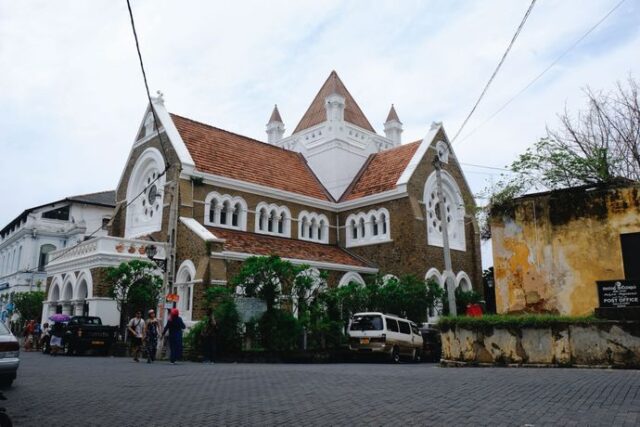
In the south along the coast, Dutch-built Galle Fort showcases the mingling of European and South Asian traditions between the 16th and 19th centuries. The Old Town within the fort is a huge tourist attraction in this country, but don’t let that turn you off.
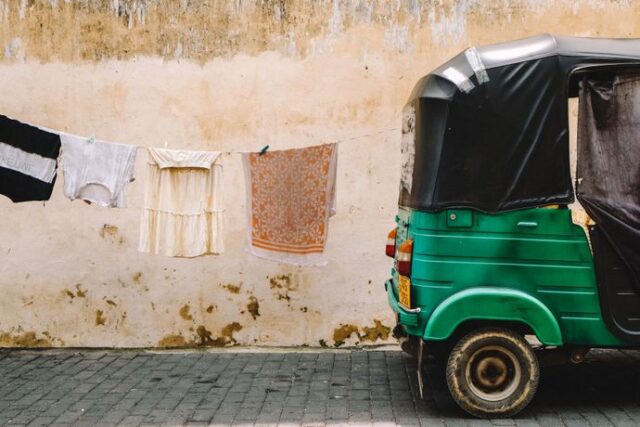
It’s easy to stroll every lane within the walls of the fort, and you should: you’ll find textures and colours and vibe at every turn. A sunset walk along the walls is a must.
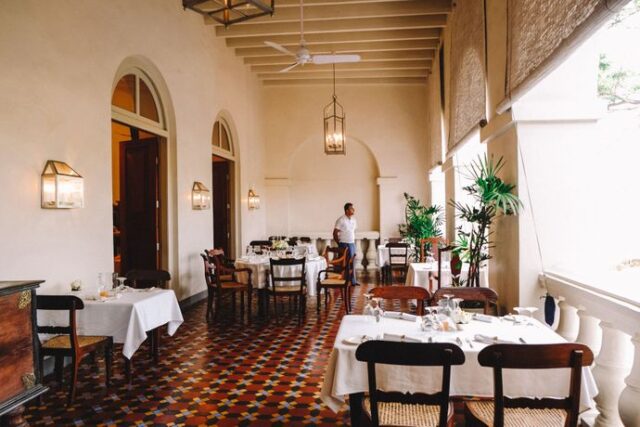
There is a beautiful mix of colonial architecture, boutiques and stunning hotels, like here at the Amangalla. Luxury travellers will have no issue finding hotels to suit their whims.
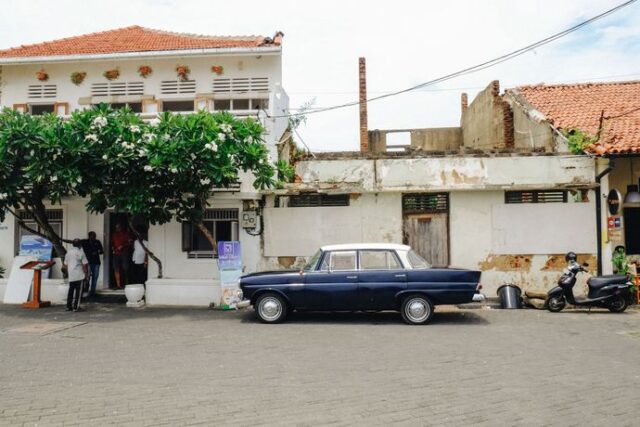
For car enthusiasts, there are many vintage beauties perfectly positioned for your Instagram pic.
The food is delicious
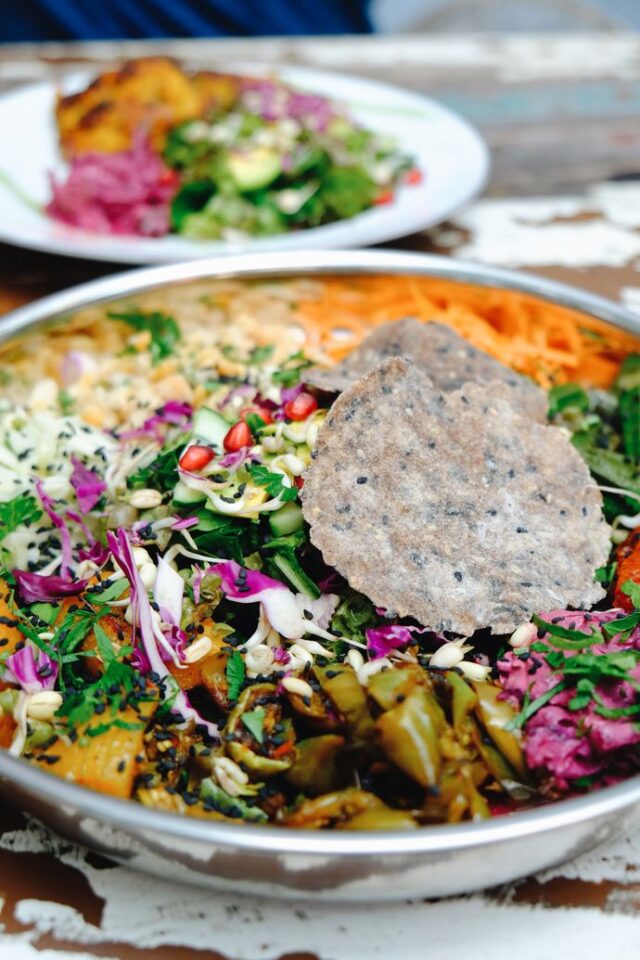
Sri Lanka’s mostly meat-free cuisine delivers on colour, spice and tastiness. If you like your curries hot, you’re in the right place. But if you’re not keen on steam billowing out of your ears, it’s easy to order stirfries or salads, and other yummy things to feast on.
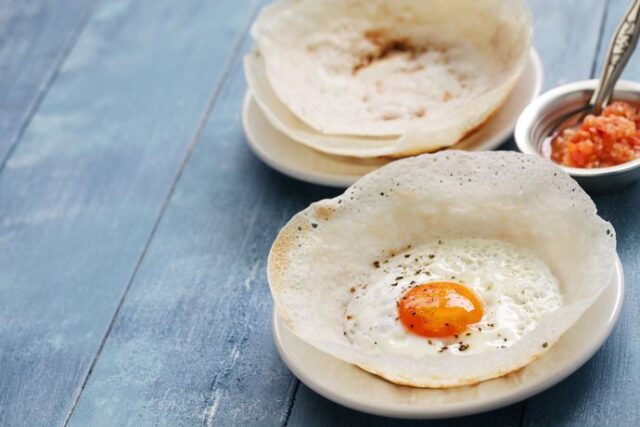
Photo Credit: Istock Photos
My pick, however, is a hopper. A hopper is a delicious crispy pancakey thing that essentially holds your other food. But you can have an egg fried in the bottom of it, winning!
Hoppers are made from fermented rice flour and coconut milk and cooked in steel bowls which creates a distinct round shape. It’s crispy on the edges and a little thicker on the bottom.
You can always catch a wave
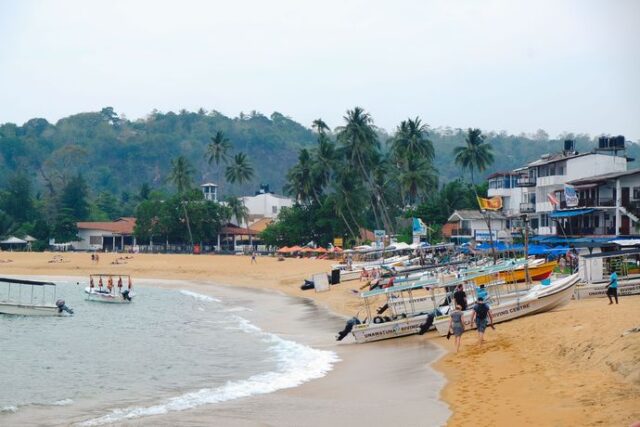
Between April and October, moon-shaped Arugam Bay on the island’s southeast coast has what is considered Sri Lanka’s best surf break. If you’re travelling November through March, head to Hikkaduwa in the country’s southwest for some decent waves.
There is also a burgeoning rise in surf and yoga retreats down south, like Tallala Retreat.
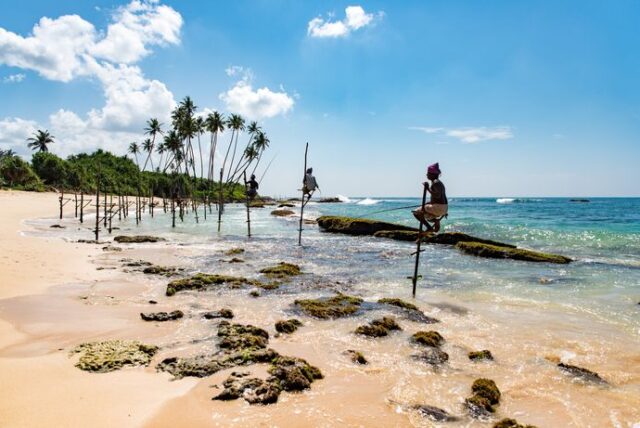
It’s all about the tea
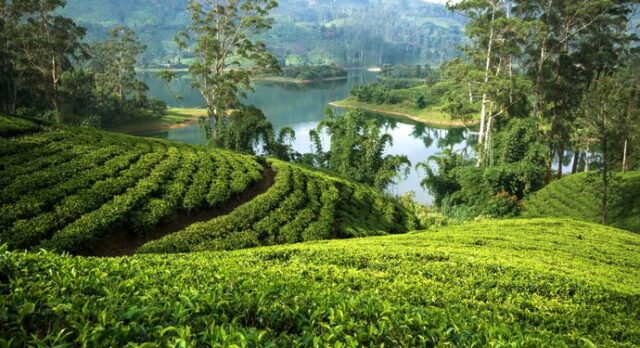
Some of the world’s best tea is grown and picked in Sri Lanka. The central Hill Country is abundant with rolling tea plantations begging to be photographed. Tea estates happily welcome visitors, keen to share knowledge about how the best leaves in the world are produced. In fact, Sri Lanka used to be called Ceylon. Ring a bell? You’ve seen it on a packet of Dilmah.
Ceylon is usually synonymous with good quality tea.
There’s a little of everything
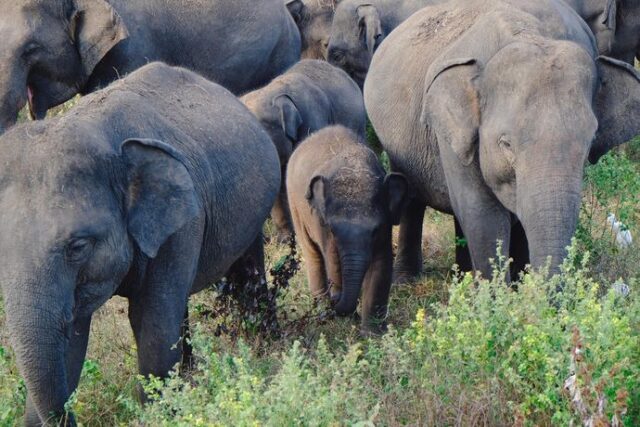
Whether you’re a surf seeker or prefer being high in the hills, after a place to unwind and come back to centre, yearn to see elephants in the wild, need a solid nature hit or love history and culture, Sri Lanka has something for you.
The experience can be completely yours, while running at a pace you recognise. Just get there before everyone else does.
This writer travelled as a guest of SriLankan Airlines.
Photo Credit:



